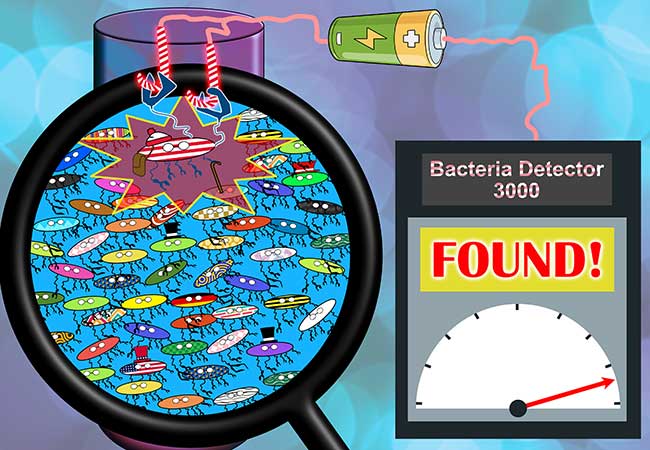New e-sensor detects dangerous bacteria
System developed by German scientists is based on a chip with an innovative surface coating.

Researchers at Goethe University Frankfurt and Kiel University have developed a new type of bacteria sensor. It is based on a chip with an innovative surface coating. It ensures that only very specific microorganisms stick to the sensor - for example certain pathogens.
Concentration determined
The highlight of the new development: the greater the number of microbes, the stronger the electrical signal generated by the chip. The sensor can therefore not only detect dangerous bacteria with high sensitivity, but also determine their concentration.
"We wanted to detect a specific strain of Escherichia coli. We knew which cells the pathogen normally infects. We used this to coat our chip with an artificial glycocalyx that mimics the surface of these host cells. This means that only bacteria from the desired E. coli strain stick to the sensor," says Frankfurt researcher Andreas Terfort.
Clever artificial glycocalyx
E. coli has little arms, the pili. The bacterium uses them to recognize the glycocalyx of its host and adhere to it. "The bacteria bind to the sensor several times with their pili, which makes them adhere to it particularly strongly," says Terfort. The artificial glycocalyx is also chemically structured in such a way that microbes that do not have the appropriate arms slide off it.
Source: University of Frankfurt









